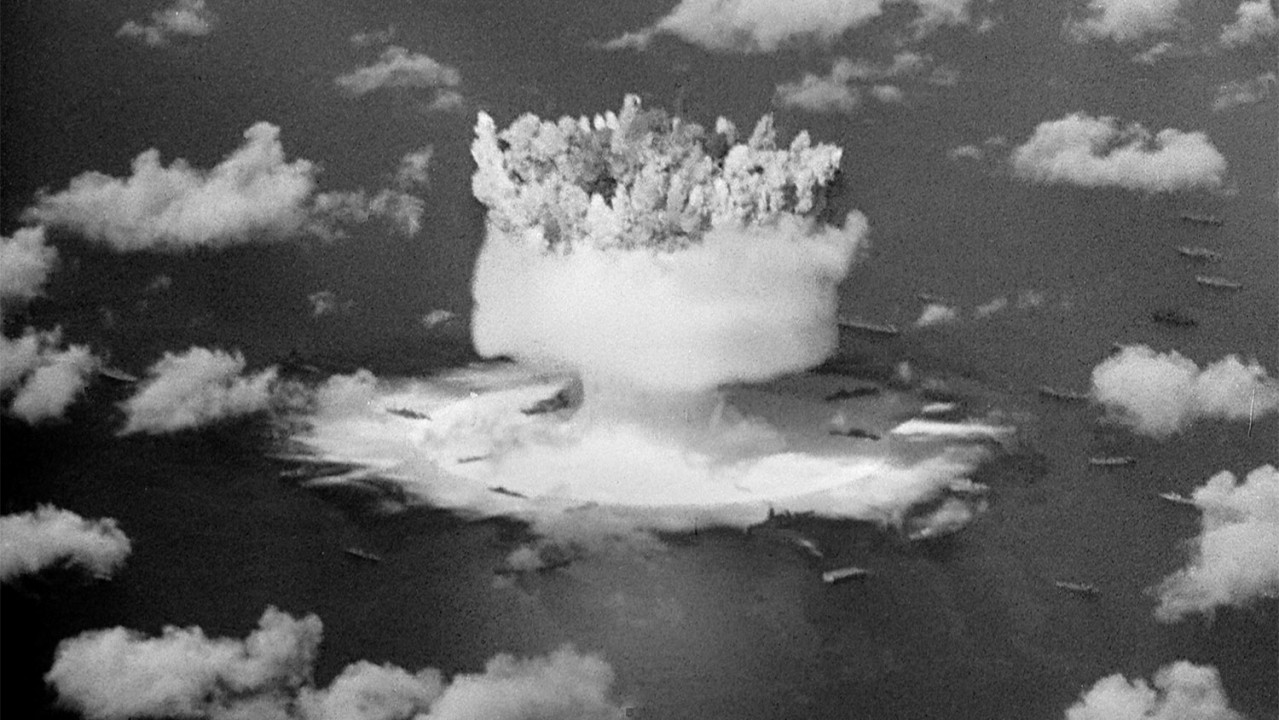
Synaesthetic Cinema:
Minimalist Music and Film
In his book Expanded Cinema—a landmark of psychedelic cinema studies—Gene Youngblood writes that synaesthesis is “the harmony of different or opposing influences produced by a work of art,” and that synaesthetic cinema is “the only aesthetic language suited to contemporary life.” For Youngblood, synaesthetic cinema meant the end of narrative: a time when film becomes purely a language of light, space and sound. Watching some of the films that influenced his utopian pronouncements, one can understand his outlook. With few exceptions, the films in this program are not only without narrative, they are also without dialogue. All of them use what is now called minimalist music, combined with lush visuals, in an attempt to guide viewers toward hypnotic states. In Youngblood’s taxonomy, “synaesthesia” and “psychedelic” are synonymous.
Like many art forms that originated in the avant-garde, minimalist music has come to seem almost hackneyed, the sonic background to Hollywood blockbusters and television advertisements. But the early years of minimalist composition saw quite a different reality, with current cultural icons like Philip Glass and Steve Reich being vilified in print and even attacked onstage. In fact, the music of Glass and Reich, as well as their counterparts La Monte Young and Terry Riley, originated in a heady mix of underground activity in the cinema, music, painting and sculpture in California and New York in the late 1950s and early 1960s. Young, the least known of the four major minimalist composers, is now generally thought to have launched the movement with his long tone compositions while a graduate student in Berkeley. Riley and Reich worked with Young at Berkeley and later, after Young had decamped to New York, with composers Morton Subotnick and Pauline Oliveros at the San Francisco Tape Center. Influenced by the drone tones they heard in Indian and North African music, as well as reacting to the teleological bent of western classical music, Young, Riley and Reich, each in their different ways, built the foundations of musical minimalism. Glass arrived at a similar place through different means. He was at Juilliard when Young, Reich, and Riley’s early performances were happening in New York, before leaving to study in Paris for the last years of the Sixties. There he encountered Indian music through Ravi Shankar and other non-Western music during an epic journey on foot from Istanbul to India.
Minimalist composition can be roughly divided into composers that work with long-held tones and stasis—the drone—and composers that use repeating patterns of a small number of notes and limited dynamics. Young is the foremost composer of the drone. After moving to New York, he teamed up with his life partner Marian Zazeela, a Welsh violist named John Cale, the somewhat mysterious poet and drummer Angus MacLise, and musician and filmmaker Tony Conrad (Harvard College ‘62) to form the Theatre of Eternal Music. This group specialized in long drone-based performances. Those familiar with The Velvet Underground will recognize the sounds, as both Cale and MacLise were original members of that band. Riley’s music had a lighter touch, and while it stayed aligned to the drone, it developed more cyclical patterns on top, where a small set of notes were repeated for a great length of time. (Reich did drone-based soundtrack work in the sixties for Robert Nelson, whose films were shown at the HFA this past spring.)
Both the drone-based and heavily repetitive styles melded well with the experimental cinema being produced in the US underground at the time. The non-narrative, exuberant swirl of bodies and colors in Chumlum and The Invasion of Thunderbolt Pagoda is heightened by the incessant droning repetition of the MacLise and Conrad soundtracks. Likewise, the slowed-down action of the three Bruce Conner films harmonizes with the cyclical repetitions of Riley’s music.
The film that brought minimalist scoring to a wider audience is Godfrey Reggio’s Koyaanisqatsi, a surprise art house hit in 1983. Glass’ exuberant score brought in many of the same elements heard in the underground films, although the increased texture and variety of the score sometimes feel more maximal than minimal. The film points both backward—Allen Ginsberg, Peter Orlovsky and Jonas Mekas are all thanked in the credits—and forward toward a future where a minimalist toolkit would be applied by all manner of composers to all manner of film and video.Some of the rich veins of experimental music are still being explored. Scottish artist Luke Fowler brings the series into the present with his subjective documentary on the lesser-known composer Martin Bartlett, who, though he studied with Riley, Pran Nath, and Oliveros, left behind few commercial recordings prior to his death in 1993. Fowler’s work collages footage of Bartlett performances, along with letters and other material from his archive to create a dreamlike portrait of an artist worth (re)discovery. – Reed Lowrie







